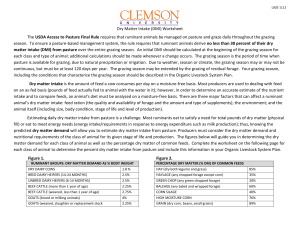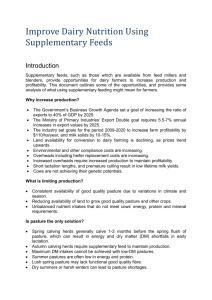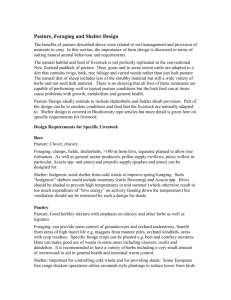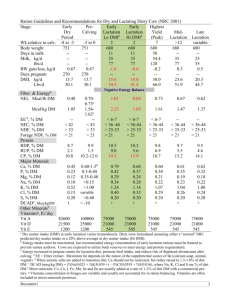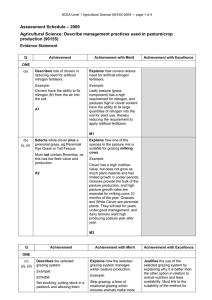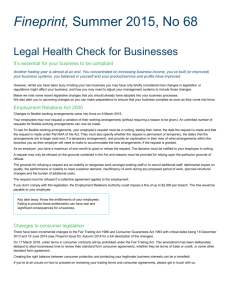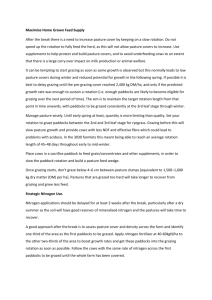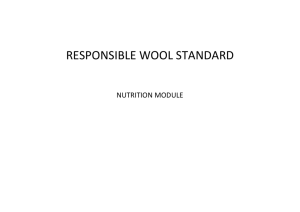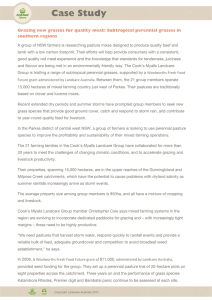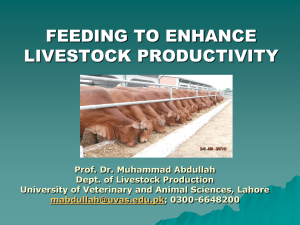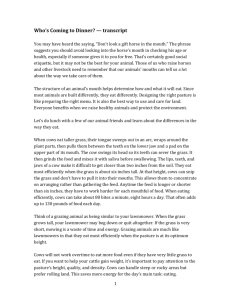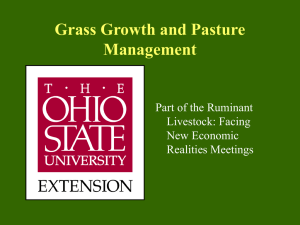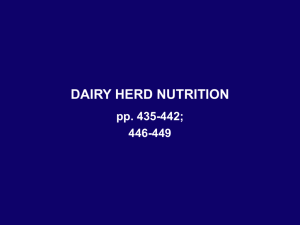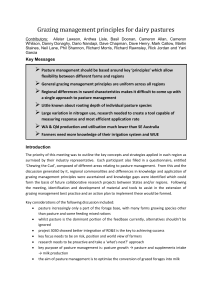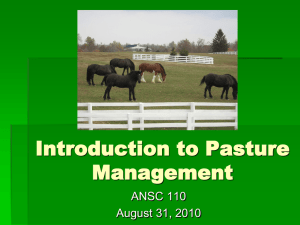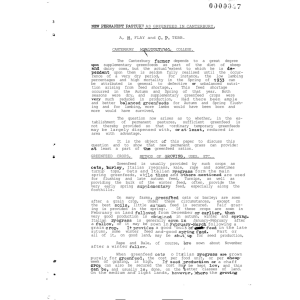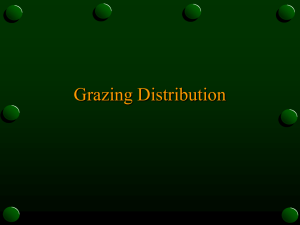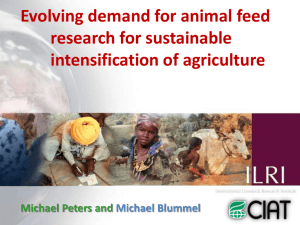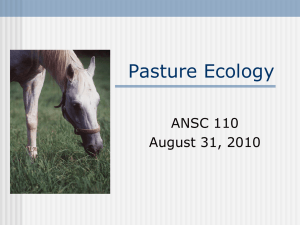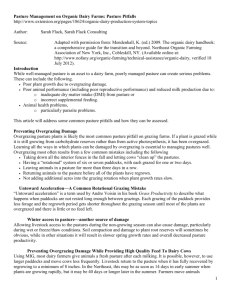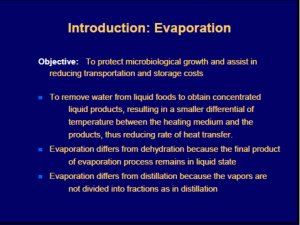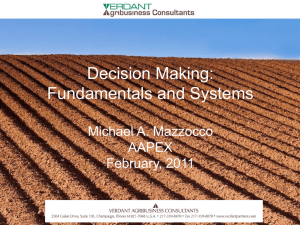Dairy nutrition
advertisement
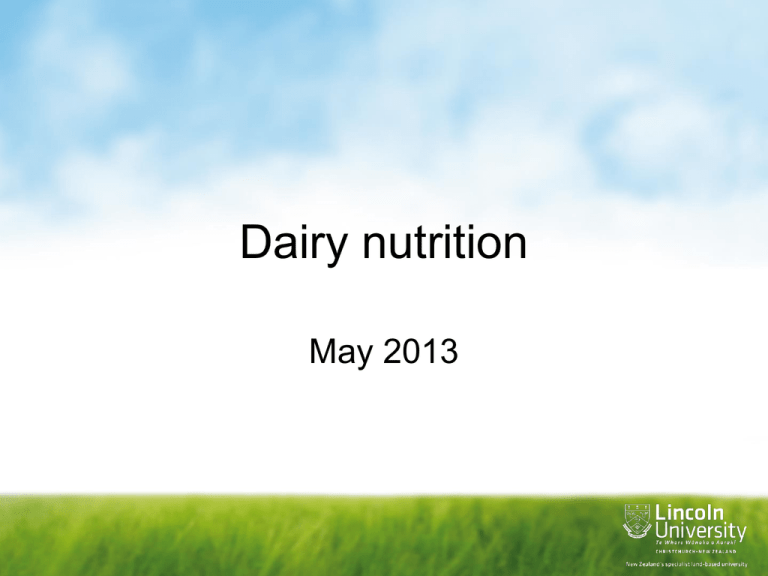
Dairy nutrition May 2013 Dairy production model The five systems of NZ dairy farming • 1) all grass, self contained – No supplement fed to the herd, except supplement made on the milking area – No grazing off of milking area • 2) feed imported either as supplement or grazing off and fed to dry cows (4% to 14% of feed imported) • 3) feed imported to extend lactation and for dry cows (10% to 20% of feed imported) – Includes farms feeding 1-2 kg of meal or grain for most of the season • 4) feed imported and used at both ends of lactation and for dry cows (20% to 30% of feed imported) • 5) imported feed used all year (30% to 40%, but can be up to 55%) of feed How do pastures grow • Made up of grass and clover plants (usually ryegrass and white clover) • In a pasture there are two processes taking place (growth and decay) • Grazing management is the use of stock to harvest grass, thereby controlling growth and quality Points to remember • Net growth is the rate at which new leaves appear, less the rate of decay • Grass leaves appear more quickly in spring (7 days) and more slowly in winter (30 days) • Grass leaves die after 21 days in spring and 90 days in winter • Dead leaves accumulate in the bottom of the pasture and reduce intake and quality (8 MJ ME) Quantity • Quantity of pasture is measured by: – Kilograms of dry matter per ha (kg dm/ha) • Can be done in several ways: – – – – – – Eye appraisal Cut and dried Plate meters Electronically By satellite Based on production (12 kg dm/kg ms) What is Quality • Very digestible • High in energy • High in protein • Easily harvested by cows (bite size) – Allows high feed intake – Allows high milk production How do we assess quality • Visually – Less than 20% dead material in base – Less than 10% seed head – More than 60% to 70% green leafy material • Laboratory – Energy (MJ of ME over 12) – Crude Protein (22% early lactation, 16% mid lactation, 14% late lactation) – Neutral detergent Fibre (30% to 40%) Management for quality • – Keep the pasture in a wedge over the entire season (see overhead) – Graze the pasture consistently down to a low post grazing residual – During periods of growth exceeding demand, “increase” the stocking rate by dropping paddocks from the grazing round and conserving – Grazing round should be set at three times the number of days it takes for each new leaf to appear Effects on milk production of quality for a 500 kg cow • High quality pasture (12.5 MJ ME) – Intake will be 17 kg dm per day – 17 kg X 12.5 MJ ME = 212 MJ ME – If 64 MJ ME required for maintenance, then 148 MJ ME available for milk (non pregnant, no weight gain) – If it takes 70 MJ ME per kg of MS, then production will be 2.1 kg MS (148/70=2.1) Quality continued… • Lower quality pasture (10.5 MJ ME) – Intake will be reduced to 14 kg dm (due to increased fibre, being slower to digest and filling the rumen—thus reducing appetite) – 14 kg x 10.5 = 147 MJ ME – Maintenance is 64, so MJ ME available for milk production is 83 MJ ME – At 70 MJ ME per kg MS, then potential production is 1.2 kg (83/70=1.2) Why feed supplements • In early lactation to boost intake, so as to better meet cow requirements • To improve body condition • To overcome pasture deficits Why continued.. • As a carrier for other items, e.g. minerals • To boost production above what is possible with grass alone • To extend lactation Best responses • When the level of feeding is low (quantity) • When the quality of pasture is low • When high quality supplements are available at a reasonable price • If supplement is easily eaten In NZ energy is most common problem • Dairy cows energy requirements are: – Maintenance – Pregnancy – Bodyweight gain – Lactation What’s the true cost of supplements? • • • • • • Need to consider: 1) cost per kg of dry matter 2) utilisation 3) cost of machinery to feed out 4) cost of labour to feed out 5) production response
